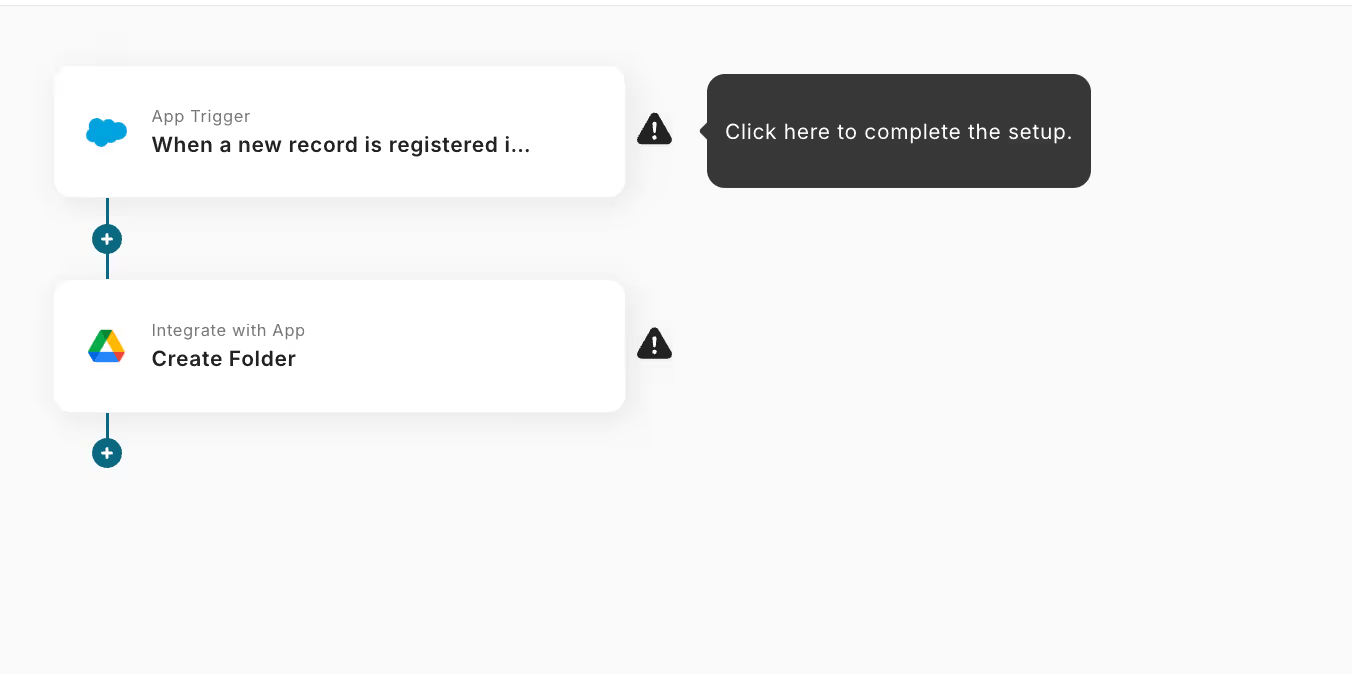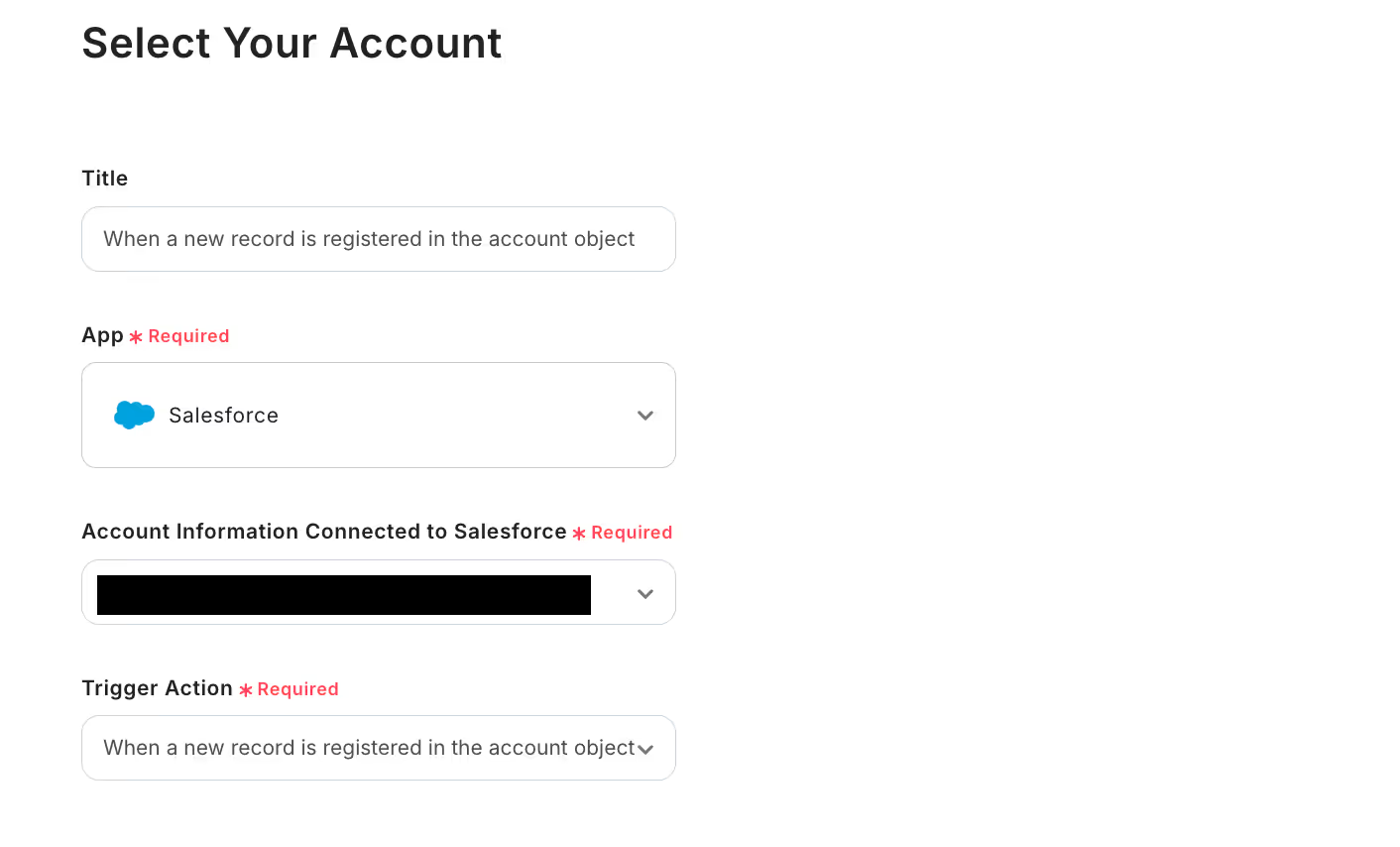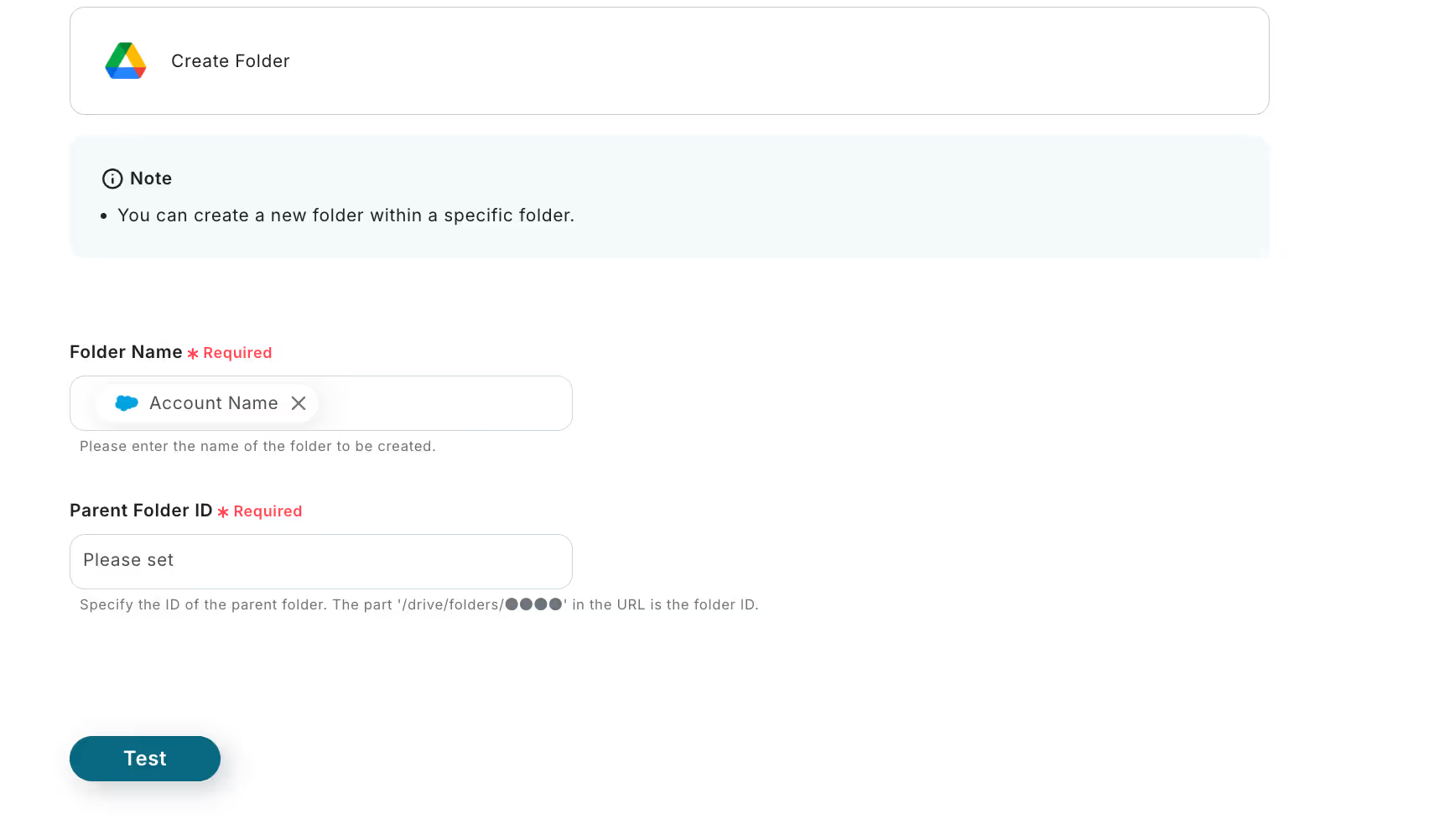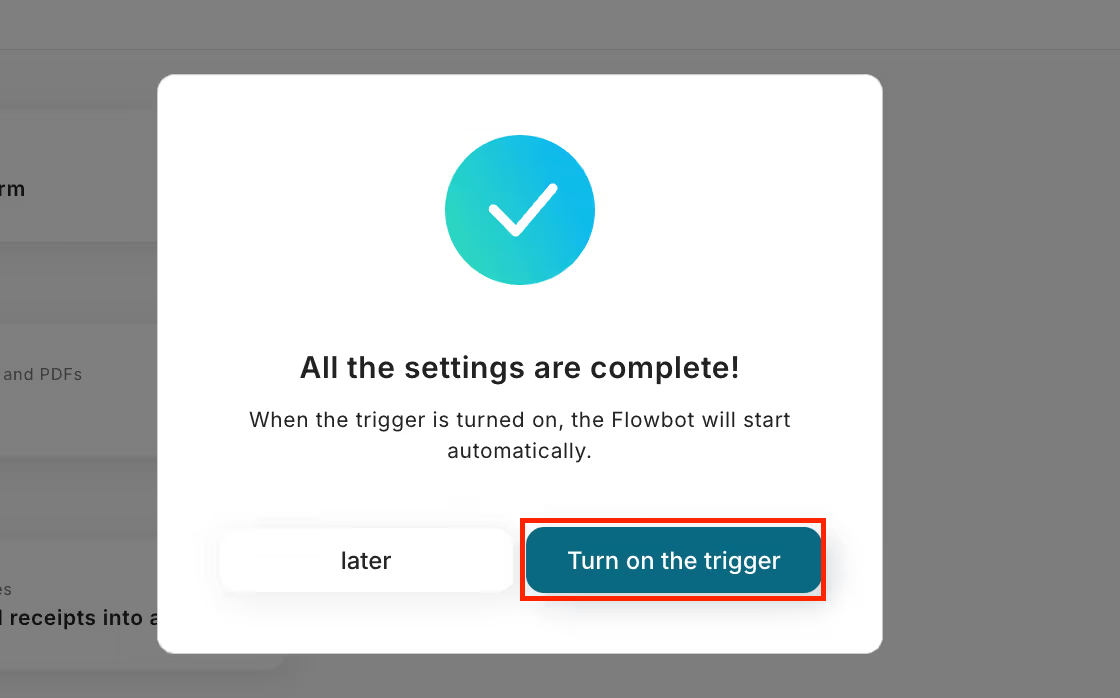Click on "When a new record is registered in the account object" in the app trigger.

(2) From the "Select Integration Account and Action" screen in Salesforce, check if there are any errors in the account information to be integrated with Salesforce.
Keep the trigger action as "When a new record is registered in the account object" and click "Next".

(3) From the "API Connection Settings for App Trigger" screen, select the trigger interval from the dropdown.
* You can select the trigger interval at 5, 10, 15, 30, or 60 minutes.
* Please note that the shortest trigger interval varies depending on the plan.

Once you have completed entering the My Domain URL, click "Test".
If no error occurs, click "Save" at the bottom.

Step 3: Integrate with Google Drive
(1) Next, integrate with Google Drive.
Click "Create Folder".
(2) From the "Select Integration Account and Action" screen in Google Drive, check if there are any errors in the account information to be integrated with Google Drive.
Keep the action as "Create Folder" and click "Next".

(3) From the "API Connection Settings" screen, select the folder name from the output.

You can select the folder ID from the candidates.
Once you have completed the input, click "Test", and if no error occurs, click "Save" at the bottom.

(4) Finally, click "Turn ON Trigger".

This completes the flow bot "Create a folder in Google Drive when an account is registered in Salesforce".














.avif)







.avif)
.avif)







